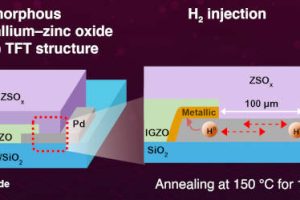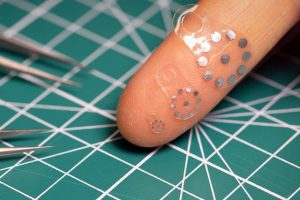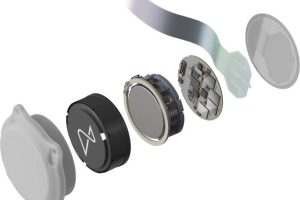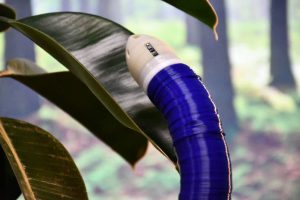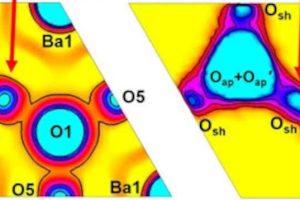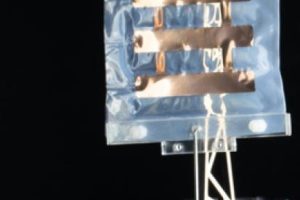Researchers at the Tokyo Institute of Technology have found a novel way to reduce source and drain contact resistance, and increase carrier mobility, in amorphous oxide transistors. In particular, they are amorphous indium gallium oxide (a-IGZO) thin-film transistors that are being proposed for a form of DRAM, where memory density can be increased by stacking the transistors. The problem is ...
Tag Archives: research
Additive allows perovskite solar cells to be made in the open air
Perovskite solar cells can be made in the open air rather than in an inert atmosphere, according to an international research team. Working with p–i–n perovskite solar cells, they added dimethylammonium formate to the perovskite precursors to inhibit the oxidization of iodide ions and deprotonation of organic cations. The cells achieved nearly 25% efficiency (1.53eV cell), and retained 90% of ...
Simple idea lets ultrasound sense the unsensable
An ultrasound-based sensing technique developed for medicine could have wider application. The question that inspired the technique was: how do we spot leaks from the gut after gastric surgery? Neither ultrasound, CT or MRI scanning could be used to remotely determine local chemistry around the internal wound, according to Northwestern University, which teamed up with the Washington University School of ...
£30m for prototypes at the UK National Quantum Computing Centre
Quantum Motion is to build a quantum processor test bed for the UK’s National Quantum Computing Centre (NQCC) at the Rutherford Appleton Laboratory in Oxfordshire. The prototype system “will be based on the same silicon MOS platform used throughout the consumer electronics industry today, while the test bed forms part of NQCC’s vision to enable the UK to solve some ...
Musk’s brain interface implanted in a human
“The first human received an implant from Neuralink yesterday and is recovering well,” tweeted Elon Musk yesterday. “Initial results show promising neuron spike detection.” Neuralink is Musk’s electronic brain interface company, developing implants with connections to thousands of in-brain electrodes. Its goal, the company has said, is to enable people with paralysis to “directly use their neural activity to operate ...
Plant-like autonomous robot responds to light, builds itself a stem
Researchers in Italy have made a robot that grows like a plant. Named FiloBot, it is the work of the Bioinspired Soft Robotics Laboratory at the Fondazione Istituto Italiano di Tecnologia in Genova. FiloBot it builds its own stem-like body, up to several metres long, curving it permanently in response to light, dark or gravity, and it can also vary ...
Robot digger autonomously builds huge dry stone wall out of random rocks
ETH Zurich researchers have trained an autonomous excavator to construct a dry-stone wall 65m long and 6m high out of random rocks and building waste. Using sensors including cameras and lidar, it autonomously created a 3D map of the surrounding site as well as finding suitable building blocks and rocks for the wall’s construction. Scanning the stones allowed the robot ...
What caught your eye this week? (Semi recovery, Fuel cell science, D2D network)
For example, what caught David Manners' eye this week were signs that the semiconductor recovery may be underway...
Better fuel cell ion conductor reveals new science
New ion conductivity science has been revealed during research into a better electrolyte for solid-oxide and proton ceramic fuel cells, according to Tokyo Institute of Technology (TItech). The material is actually a ‘dual-ion conductor’, which allows both protons and oxide ions to defuse, and can “realise high total conductivity at lower temperatures and improve the performance of electro-chemical devices”, according ...
Robotic soft actuators stay strong
A happy accident has revealed a way to stop electrostatic soft actuators from going limp. These actuators consists of a flat plastic bag of dielectric liquid with electrodes on opposite faces of the bag. If a high potential difference is placed between the two electrodes, they are attracted together, squishing the fluid out of the way. This action can be ...
 Electronics Weekly Electronics Design & Components Tech News
Electronics Weekly Electronics Design & Components Tech News
